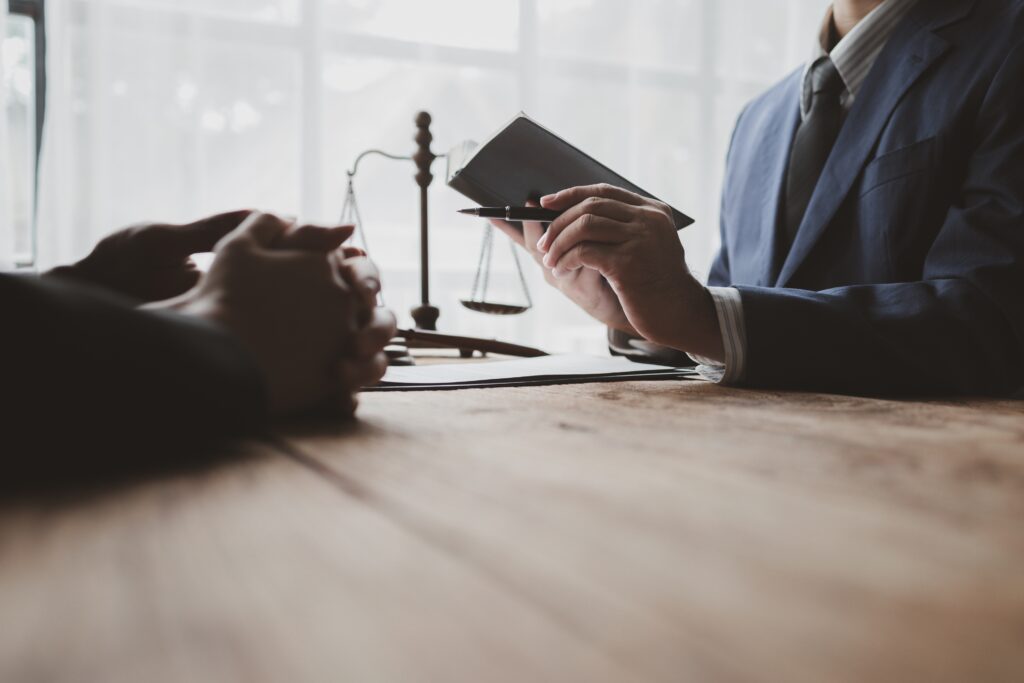When motorists violate bicycle laws in Alberta, Canada, their chances of causing a serious accident increase dramatically. Many of these laws pertain to right-of-ways, traffic signs and signals, attentive driving, and safely passing bicycles.
If you suffered injuries in an Alberta bicycle crash that an irresponsible driver caused, you may be eligible for compensation. A knowledgeable bicycle accident lawyer in Edmonton, Alberta can examine the facts and circumstances of your situation, go over your legal options with you, and set you on course to recover the fair compensation you deserve.
Laws that Alberta Drivers Frequently Violate with Regard to Bicyclists
In Alberta, serious accidents frequently occur when drivers violate important traffic laws designed to protect cyclists. These violations can lead to dangerous collisions, injuries, and even fatalities. Below are some of the most common traffic laws Alberta drivers break when sharing the road with bicyclists.

- Failure to Yield to Bicyclists – One of the most frequent violations involves drivers failing to yield the right-of-way to bicyclists at the proper times. In Alberta, cyclists have the same rights as motor vehicles on the road. This means that when a cyclist is travelling in a lane, drivers must respect their space. A common situation where drivers fail to yield occurs when making a right-hand turn at intersections. If the driver doesn’t check their blind spot or fails to notice a cyclist travelling straight, a collision can happen, leading to serious injuries for the cyclist.
- Unsafe Passing – Another common violation is unsafe passing. Alberta law requires that drivers leave a minimum of one meter of space between their vehicle and a bicyclist when passing on roads with a speed limit of 60 km/h or less and 1.5 meters on roads with higher speed limits. Many drivers, either out of impatience or lack of awareness, pass too closely to cyclists, creating dangerous situations. Passing too closely can result in the cyclist being sideswiped or losing balance, leading to accidents.
- Distracted Driving – Distracted driving is also a significant contributor to accidents involving bicyclists. Although it’s illegal to use handheld electronic devices while driving, many drivers still do so. When a driver becomes distracted with a phone call, text message, or other electronic devices, they are less likely to notice a cyclist in their path. This can result in rear-end collisions or sideswipes, both of which can cause severe injuries to bicyclists.
- Failure to Obey Traffic Signals – Some drivers also fail to obey traffic signals, which can be particularly dangerous for cyclists. Running red lights or stop signs can lead to T-bone accidents where a vehicle hits a cyclist while moving through the intersection illegally. These types of bicycle collisions often result in life-threatening injuries.
Most Common Bike Accident Injuries in Alberta
In Alberta, bicyclists involved in accidents with motor vehicles often suffer severe injuries due to the lack of physical protection that bicycles provide. While some injuries may be minor, many collisions result in life-altering conditions or even fatalities. Below are some of the most common injuries that bicyclists may suffer in Alberta accidents.
- Head Injuries – Head injuries are among the most serious injuries bicyclists can experience in an accident. Even with a helmet, a collision with a car can cause traumatic brain injuries (TBIs), concussions, or skull fractures. TBIs can lead to long-term cognitive issues, memory loss, and even permanent disabilities.
- Spinal Cord Injuries – Spinal cord injuries are another common result of serious bicycle crashes. When a bicyclist is thrown off their bike during a collision, they may land on their back, causing damage to the spinal cord. These injuries can lead to partial or full paralysis, drastically affecting the individual’s quality of life. Even less severe spinal injuries can cause chronic pain and mobility issues.
- Fractures and Broken Bones – Fractures are one of the most frequent injuries in bicycle accidents. The force of impact with a motor vehicle can cause bones in the arms, legs, wrists, or ribs to break. Cyclists may instinctively use their arms to brace themselves during a fall, leading to fractures in the arms or shoulders. In more severe cases, multiple bones may be broken, requiring surgery and long recovery periods.
- Internal Injuries – In some accidents, bicyclists may suffer internal injuries that are not immediately obvious. The force of a collision can damage internal organs, such as the liver, kidneys, or lungs, leading to internal bleeding or organ failure. These injuries can be life-threatening and frequently require immediate medical attention.
- Road Rash and Lacerations – When bicyclists are thrown to the ground or dragged during a crash, they often suffer road rash, which is the scraping away of skin due to friction with the pavement. Severe road rash can cause deep wounds that may require stitches and leave permanent scars. Lacerations, or deep cuts, are also common and can lead to significant blood loss if not treated quickly.
Helpful Evidence in Alberta Bicycle Accident Cases
In Alberta, bicycle accident cases often involve serious injuries, and gathering strong evidence is necessary to support a claim for compensation. Proper evidence can establish liability, demonstrate the extent of injuries, and prove damages. Here are the most important types of evidence in Alberta bicycle accident cases:
- Police Reports – The police report is one of the most critical pieces of evidence in a bicycle accident case. After an accident, the police will typically arrive at the scene, document what happened, and file an official report. This report includes key details such as the time, date, and location of the accident, witness statements, and a summary of how the crash occurred. The police may also indicate who they believe was at fault. Although this report isn’t the final say on liability, it can significantly strengthen a claim.
- Photographs and Video Footage – Photographic and video evidence is essential in showing the extent of the accident and its aftermath. Pictures of the accident scene, damage to the bicycle and vehicle, road conditions, and any visible injuries can provide clear visual documentation of what happened. If video footage is available, such as from traffic cameras or nearby businesses, it can offer indisputable proof of how the accident unfolded.
- Witness Testimony – Witness testimony can be very helpful in supporting the injured bicyclist’s version of events. If there were people nearby who saw the accident happen, their statements could provide an unbiased account of the crash. Witnesses can also confirm whether the driver was speeding, distracted, or otherwise negligent. Gathering witness information at the scene of the accident can make a significant difference in proving liability.
- Medical Records – Medical records are vital in proving the extent of injuries and damages. Records from doctors, hospitals, or other medical professionals will document the severity of the injuries, the required treatments, and any long-term effects. These records can help establish the compensation that may be owed for lost income, pain, suffering, and inconvenience.
- Expert Testimony – In some cases, expert testimony may be required. Accident reconstruction experts can analyze the bicycle crash and determine how it happened, while medical experts can provide opinions on the long-term effects of the victim’s injuries.
Gathering this evidence can significantly increase the chances of a successful outcome in an Alberta bicycle accident case.
Litigation Options in Alberta Bike Accident Cases
In Alberta, individuals involved in bicycle collisions have several litigation options to pursue compensation for their injuries and damages.

- Settling the Case – One of the most common options is to settle the case before it goes to trial. Many bicycle accident claims are resolved through negotiation between the injured party and the at-fault party’s insurance company. A settlement is often advantageous because it can provide quicker compensation without the uncertainties of a trial. During negotiations, both parties discuss the extent of damages, including lost earnings and pain and suffering. If an agreement is reached, a settlement document is signed, and the case is closed. However, it’s important for the injured party to fully understand their rights and the true extent of their damages before agreeing to a settlement, as it may limit their ability to pursue further compensation.
- Taking the Case to Trial – If a fair settlement cannot be reached, the injured party may choose to take their case to trial. This option is often pursued when the damages are significant and the insurance company refuses to offer a reasonable settlement. During a trial, both parties may present their evidence and arguments to a jury, who then decides the outcome. While trials can provide the possibility of a larger compensation award, they also come with risks. The outcome is uncertain, and the legal process can be lengthy and costly. Additionally, the emotional toll of a trial can be significant for the injured party.
- Alternative Dispute Resolution (ADR) – Another option available in Alberta is ADR. This approach includes methods such as mediation or arbitration, where an impartial third party helps the involved parties reach a resolution without going to trial. Mediation involves a mediator facilitating discussions to help both parties come to an agreement, while arbitration involves an arbitrator making a binding decision. ADR can be a faster, less formal, and often less expensive way to resolve disputes compared to traditional litigation.
Each option has its pros and cons, and the best choice depends on the specifics of the case. An experienced bike accident lawyer in Alberta can provide invaluable guidance in navigating these litigation options and determining the best path forward.
How Much is an Alberta Bike Accident Case Worth?

The value of a bicycle accident claim or lawsuit in Alberta, Canada, varies significantly based on several factors, including the severity of injuries, the circumstances surrounding the accident, and the extent of the accident victim’s pain and suffering. While it is challenging to provide a precise figure, understanding the types of recoverable damages can help victims gauge the potential value of their claims.
- Lost income – One of the most common types of recoverable damages in a bicycle accident case is lost income. If an individual suffers an injury and is unable to work, they may be entitled to compensation for the income they would have earned during their recovery. This includes both current lost earnings and any future earnings that may be affected due to long-term injuries. For instance, if an injury prevents a cyclist from returning to their previous job or affects their ability to work full-time, they may seek compensation for the difference in income.
- Pain and Suffering – Pain and suffering is another important component of compensation. This term refers to the physical and emotional distress experienced as a result of the bicycle accident and injuries. Evaluating pain and suffering can be complex, as it often involves subjective judgments about the effect of the injuries on the victim’s quality of life. Factors considered include the intensity of pain, duration of recovery, and how the injuries have affected the victim’s daily activities and relationships.
- Loss of Enjoyment of Life – Compensation for loss of life enjoyment addresses the effect of the injuries on an individual’s ability to participate in activities they once enjoyed. For example, if a cyclist can no longer ride, engage in hobbies, or participate in social events due to their injuries, they may be entitled to compensation for this loss. The more significant the effect on the individual’s lifestyle, the higher the potential compensation.
- Emotional Distress – Emotional distress compensation may be awarded for psychological effects resulting from the accident. This can include anxiety, depression, and post-traumatic stress disorder (PTSD). Demonstrating emotional distress often requires evidence from mental health professionals who can attest to the individual’s struggles following the incident.
- Punitive Damages – In some cases, punitive damages may be awarded, particularly if the other party acted with gross negligence or malicious intent. These damages are meant to punish the wrongdoer and deter similar wrongful behaviour in the future.
Speak with a Skilled Alberta Bicycle Accident Lawyer Today

If you or a person you care about recently sustained injuries in an Alberta, Canada, bicycle collision, a knowledgeable Alberta personal injury lawyer is ready to assist you. Your lawyer can immediately investigate your accident circumstances, gather evidence, and file a claim with the appropriate insurance company. In addition to negotiating on your behalf, your lawyer can litigate your case to a resolution in the court system if the insurance company fails to compensate you fairly. Your lawyer will do everything they can to maximize your total compensation award and make you whole again.
